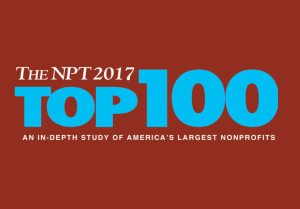Republican pundit Mary Matalin yesterday referred to her husband, Democratic pundit James Carville, as “my service project.” For his part, Carville said New Orleans without music “might as well be Atlanta,” not that there’s anything wrong with Atlanta.
The duo moved their family from the Washington, D.C., area to Carville’s native New Orleans three years ago. They talked about that decision and the rebuilding of the hurricane ravaged city during the opening general session of the National Conference on Volunteering and Service (NCVS). She is originally from Calumet City , Ill., but came to love New Orleans.
More than 4,000 people involved in various aspects on public service and volunteerism are attending the conference, which runs through Wednesday. They took on 25 service projects around the city prior to the conference officially opening on Monday. The event is convened by the Points of Light Institute and the Corporation for National and Community Service (CNCS).
If the unlikely pair of Matalin and Carville can make a marriage work, then cooperation of federal, state and local governments and the nonprofit sector should be a breeze. But, it isn’t. There are turf wars, varying skills levels and often a lack of management during a disaster recovery operation.
Response to disasters was an overriding theme of the conference. Cooperation between federal program participants such as AmeriCorps and local volunteers has long been a feature of the conference. Disaster recovery has been a major element of this annual conference since Hurricane Katrina hit New Orleans nearly six years ago. The focus was taken to a new level this year, with a full track on disaster response.
Retired Adm. Thad Allen, who headed the government’s response to the British Petroleum (BP) disaster in the Gulf of Mexico and who took over the operations from the Federal Emergency Management Agency (FEMA) in New Orleans after Katrina, called for government and local organizations to work together to establish accrediting and skills assessments for volunteers going into disaster areas. He said a national standard was needed for the safety and security of those impacted by a disaster and for the volunteers.
Earlier in the day, the National Voluntary Organizations Active in Disaster (VOAD) in Arlington, Va., and the Washington, D.C.-based CNCS, signed a memorandum of understanding “to develop and maintain a mutual understanding and working relationship…to foster partnerships between businesses and nonprofits.”
Some in the sector get queasy when the government and the charitable sector enter into deals, fearing governmental control. Kelly L. DeGraff, senior advisor and director of disaster services for CNCS, explained that while federal grants pay AmeriCorps workers, they are under local control. The agreement with VOAD, which represents 50 of the nation’s largest disaster-related charities, is for three years and stipulates actions by both sides that include people designated to facilitate information between the two organizations.
Among other things, National VOAD will:
* Provide technical assistance and identify opportunities for Corporation programs seeking to support communities impacted by disaster;
* Provide The Corporation with information regarding National VOAD’s members meetings, committees meetings and conference calls;
* Provide The Corporation with a space on National VOAD committees (Government Relations, Volunteer Management and Disaster Recovery);
The CNCS will:
* Provide technical assistance, as appropriate, to National VOAD and its members regarding Corporation grants and assistance
* Provide National VOAD members the opportunity to apply for AmeriCorps and National Civilian Community Corps ( NCCC) teams to support targeted priorities; and,
* Provide National VOAD with information on its response during major disasters, or as requested by National VOAD.
A caravan of refrigerated trucks, trailers, cooking equipment, tents, generators, busses and a 24-foot music stage, left from the Ernest N. Morial Convention Center in New Orleans and headed to Joplin, Mo., which saw 37 percent of the city wiped out by a tornado last month.
The goal is to feed more than 1,000 people fresh Louisiana seafood on June 7. They will return to New Orleans on June 8. The caravan was led by Greg Reggio and the Taste Buds, a local culinary company, under the heading of “Three Chefs: One Mission.” The reason, he said, “We know where these folks have been.”
Allen said that disasters breed people who want to help but need to be coordinated by skill level. “There are more events that test the preparedness of the nation,” he said. And a lack of preparedness brings about a credibility problem with the public.
Like it or not, in this day of the 24-hour news cycle and the Internet, people will interject themselves into a situation so disaster response managers have three choices: “suffer, adapt or manage.” He referred to the Internet as “this generation’s non-biodegradable plastic, our arrowheads.” And that information access brings SUVs – “spontaneous unaffiliated volunteers.”
He called for a national standard for volunteers going into disasters to deal with safety and security, as well as liability and costs.
Carville and Matalin spoke of how New Orleans is a city filled with people “who used to do something else,” but have now taken on a role of redevelopment, whether it’s picking up trash or building a playground. Their jobs gone, they chose to stay and be part of the rebuilding.”
Carville spoke of the thousands of musical instruments lost during Hurricane Katrina and the potential loss of the culture. “You miss one generation and the whole thing goes,” he said.
Matalin praised the volunteers and nonprofit leaders for being the city’s de facto government in the storm’s immediate aftermath. “It was only volunteers, period, immediately after Katrina,” she said. “There is still a deep, organic citizen activism,” she said.
Carville said that the recovery is coming “block by block” and still has a long way to go. “In New Orleans,” he said, “we never, ever speak of quality of life. We speak of way of life. That’s our quality of life.”










